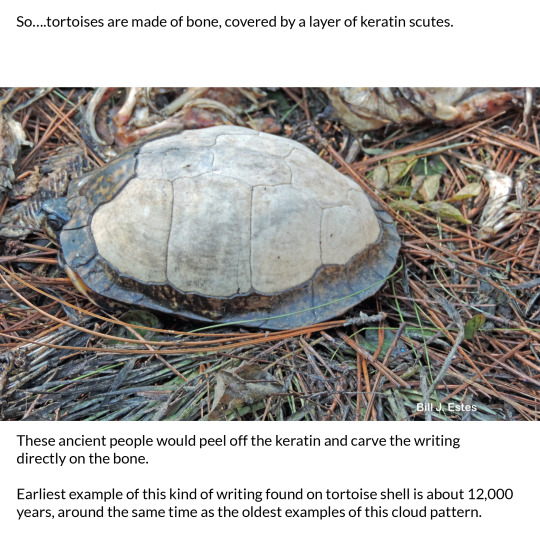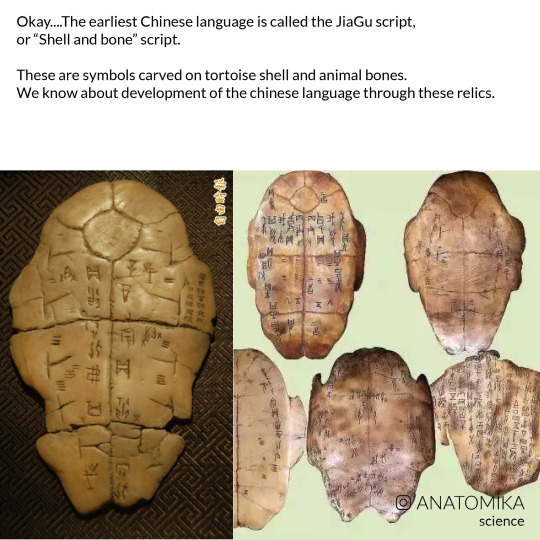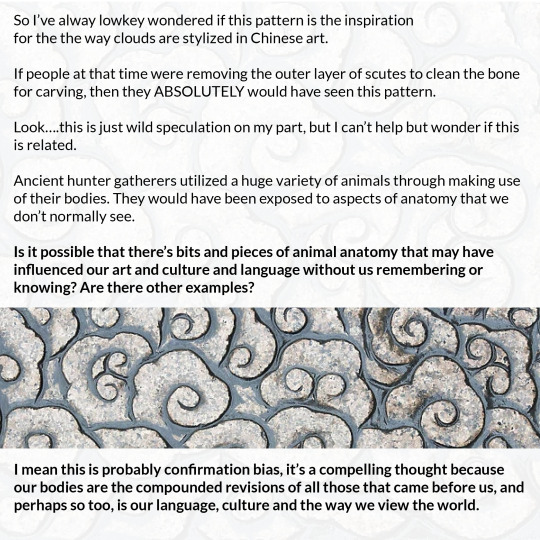Text
Sketch I made

#me lately#derealization going crazy#art#my art#artist#artblr#digital art#digital artist#woo#artwork#arts#derealization#also new eye drawing style???#love it#im gonna sue tumblr for their shitty quality stop ruining my art#can y'all tell what music i listen to lmao
8 notes
·
View notes
Note
Don't know if you have before, but could you talk a bit about body language and deductions? Thank you
Hello! I think i've mentioned the subject before, but i've never talked about it in depth, mostly because i'm not particularly well versed in body language. I used to know people who also had blogs who were very knowledgeable in it, so if they become active again i'll make a post about it. That being said, as i've been writing this response i've had to be very careful to not get into any details i'm not sure about or give any advice that may be wrong. So i've decided to keep my response fairly vague while still giving as much advice as i can.
So body language falls into the non verbal communication side of deduction, along with microexpressions, and both should be treated similarly. Body language and facial expressions (and their corresponding microexpressions) are ways that our body has of relaying what we feel or think in any given moment, a lot of the time involuntarily, this means that like with every other language, we need to learn to not just read it, write it, and speak it, we also have to learn to interpret it. There's a plethora of books and resources out there that teach you how to read body language, what certain movements, poses, and reactions indicate about a person's state of mind, so i'm not gonna go into that here, actually it's probably the easiest part of deduction to find information on. What i am gonna touch on is what to then do with that raw information
Similar to all the other parts of deduction, once you interpret body language, get all the information you can about someone's reactions, state of mind, emotions, ideas, feelings, etc. you have to start asking yourself what this information means. Knowing that someone's uncomfortable is only useful if you know why, and that's where deduction comes in, sometimes it's as easy as noticing that the body language shifts once a certain person comes into the room, or a certain topic is mentioned, other times you have to do a bit more digging, after all that person who triggers body language that indicates discomfort may do so because they're someone's boss, or because they're their partner and they had a big fight recently, or because they've harassed the person in some way, or a plethora of other reasons.
Now how to do that is the hard part, i can't give any advice that's specific to body language, but i have talked about how to go deeper than the raw information you can observe about someone before, so i'll link those posts here. While i'm not well versed in body language it's not a big leap to assume that due to the nature of the advice i give in these posts, they could be applied to information gained through reading body language:
Deduction: Passive or Active
Changes and Deductions
Chess and Deduction
Binaries
I also recommend the book What EveryBODY is Saying by Joe Navarro, it's a very good resource to learn body language.
Hopefully this was useful! I encourage you to look more into body language and study it in tandem with deduction, maybe you can make your own posts explaining these topics!
8 notes
·
View notes
Text
Went shopping with the Fatherlord (atla reference) and it inspired a meme

#i had to memorize 34 items on the go#for 3 different stores#love him but dude u know you can write stuff down right#memory#mind palace#sherlock#memes#meme#mind palaces#groceries#mentalism#as a meme#idk i think im funny#i did remember them all tho#at this point he just rattles off stuff and expects me to remember it 😭#i am now his walking notes app
9 notes
·
View notes
Note
How do you deduce where you or someone else put things? Is it just sort of retracing your steps?
Hello! Good question, i'm also happy to see people actually having further questions from my answers
So regarding how to do so for yourself, yes that's just retracing your steps, but when it comes to other people, things can be a bit more complicted. Usually what you have to do is use an established baseline, knowledge on what the person has done throughout the day, and knowledge on what the object in question is. So knowing what a person usually behaves like when in different mindsets, combining that with where the person has been and what they have done (which you might just know cause you deduce it, or they might just have told you), and combining that with the nature of the object itself you, can narrow down the places where that object can be pretty significantly
So for example if you know that someone paces a lot when they're nervous (and let's assume they were recently nervous), you know they haven't left the house (which again, you might deduce or just be told), you know it's morning so they haven't the room yet, and you know the object in question is a phone. Then you start narrowing down places, can't be in a pocket cause they probably used the phone before going to bed last night, so not in the closet or in any clothes. You know you have to include places further away from the bed because they were nervous recently so they probably have been pacing around the room, even though it's morning and they haven't had a chance to leave the room yet, so desks, shelves, bookcases, etc are on the table. You also know their handedness, so cross out any places that don't align with that (if they're right handed and have two bedside tables then the left one is far less likely, for example, or if it's on the desk the it's probably to the right side of it, which is important information because clutter will build up more on that side, which means the item might be harder to find because of the clutter). If we're assuming this is an object the person themselves can't find that narrows it down more, because it means it's not anywhere they usually place it, you can use this along with info you might collect or already have stored away about them, like for exaple if they charge their phone on the desk it's very likely that the desk has been thoroughly searched, which means you shouldn't necessarily discard it, but it should be lower on the list of places where the phone could be.
Through this process you can pinpoint the most likely places for the object to be located. If you change any of the variables then the parameters change, for example if we're talking about a bigger object, say a purse, then the places for it to be are decreased, just because of the amount of places where one could place a purse where it's not easily visible, for example a phone can be hiding under the covers of the bed, the purse can't. If you change the mindset of the person (and therefore the baseline) then the radius might be reduced, cause if they're sad then they might have just stayed in bed, if they've been angry they might have thrown things around the room, or left it to clear their mind and calm dorn. If you change the places the person has been then the radius increases, and you have to go through this process keeping in mind more variables from different locations.
Obviously more specific situations might include more specific details, that should also be kept in mind, but that's the general gist of it. This isn't necessarily only for when you wanna know where someone's misplaced something, but say you want to find a file in someone's office, or a set of keys to a door in their house, you can use the same process adjusting the parameters accordingly
12 notes
·
View notes
Text
just because someone can articulate their point better doesn’t make them right, it makes them articulated.
365K notes
·
View notes
Text
Here's another piece I made last night

17 notes
·
View notes
Text
Here's a Peter Parker angst doodle, cause why not

#spiderman#peter b parker#peter parker#irondad#spiderson#peter#tom holland#angst#art#my art#my artwork#digital art#digital artist#fanart#spiderman fanart#doodle
47 notes
·
View notes
Text
Suddenly struck with a need to explain to you how boat pronouns work (I work in the marine industry).
When you're talking about the design of the boat, you say "it".
When the boat is still being built, your say "it".
When the boat is nearing completion, you can say "it" or "she".
When the boat is floating in the water you probably say "she", unless there is still a lot of work to be done (e.g. no engine yet) then you say "it".
When the boat is officially launched and operating, you say "she". If you continue to say "it" at this point you are not incorrect but suspiciously untraditional. You are not playing the game.
If you are referring to a boat you don't really know anything about you may say "it" ("there's a big boat, it's coming this way"). But if you know its name, it's probably "she" ("there's the Waverley, she's on her way to Greenock").
If you are talking about boats in general, you say "it" ("when a boat is hit by a wave it heels over")
If you speak about a boat in complimentary terms, it's "she" ("she's a grand boat"). If you are being disparaging it may be it, but not necessarily ("it's as ugly as sin", "she's a grotty old tub").
If she has a boy's name, she's still she. "Boy James", "King Edward", "Sir David Attenborough"? The pronoun is she.
If it's a dumb barge (no engine), you say it. But if it's a rowing boat (no engine), you say she.
I hope this has cleared things up so that you may not be in danger of misgendering floating objects.
85K notes
·
View notes
Text
Being autistic is weird because I think I'd be entirely entirely immune to the maddening effects of witnessing an Elder God but learning that barnacles are arthropods rather than molluscs nearly gave me an existential crisis
13K notes
·
View notes
Text
This right here is how I would explain my entire aesthetic

#gothic#but fun#i want these so bad#imagine your funeral director just. wheeling around the funeral home#respectfully ofc
5K notes
·
View notes
Text
tumblr stop asking me to add tags to my posts if someone wants to see my posts they gotta work for it the only thing free in life is arson
993 notes
·
View notes
Text
🧑🏻🔬THE PERIODIC TABLE OF CHEMICAL ELEMENTS👩🏿🔬
(Note: I am not a chemist, just someone who enjoys science, if I made any errors please let me know, thank you and I hope you enjoy reading this)

Ever wonder about this bad boy? While here's a quick crash course on it and some of it groups!
What is it?
The Periodic Table is an arrangement of rows and columns used to display and predict what elements exist and their properties based upon where they fall.
The farther right and down you go, the "heavier" the elements get as they have more Protons, going from 1 Proton for Hydrogen to as of now 118 Protons for Oganesson. Each Collum, excluding the Transition Metals and Rare Earth Series, have similar chemical properties.
Along with this, excluding the Transition Metals, as you go left to right the number of Valence Electrons increases by 1 up to 8 before flipping around back to 1. Valence Electrons can be thought of as the Hands of Atoms, being how they interact and react with each other; a free valence electron spot being a place another atom can bond to like an open hand, while an occupied valence electron spot is like a full hand slapping away other potential electrons.
Each valence group, along with the Transition Metals, builds up the base of all of Chemistry and the universe. So lets have a look at a few of them, shall we?
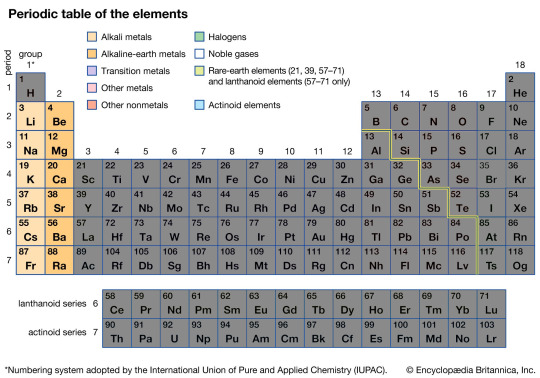
The Alkaline-Earth Metals
The Alkaline-Earth Metals are the two first columns of the Periodic table, and are often sub-divided into the Alkaline Metals and Alkaline Earth Metals. Both groups however do share some properties, often being softer metals that are extremely reactive.
Most famously, they react with water to produce Hydrogen and some heat amount of heat. On the more reactive side such as Lithium and Sodium, this means upon contact with water they will explode, sending red hot metal flying with a violent blast. On the less extreme end such as Magnesium or Calcium, they can be used as ways to produce Hydrogen in small quantities.
Not only are they reactive with water, but also air, oxidizing rapidly in the air and in the case of Magnesium having an extremely violent and energetic reaction when lit on fire.
They also all like to bond with chlorine to produce salts such as Sodium chloride, or more commonly known as humble Table Salt.
After the neat uniformity of the Alkaline-Earth metals, we reach,

The Transition Metals
The Transition Metals are not transgender metals, but rather a large collection of various metals that don't as neatly fit into rows or columns as the other Elemental groupings. Most notably, they have no Valence Electron Shell patterns, meaning you often have to search out the specific Transition Metal you are working with to know how many spots it has still open. They are by far the largest single group of elements within the Periodic Table, and chances are if you think of a metal it will be a transition metal.
It includes some famous stars such as Iron, Gold, Copper, Titanium, Lead, Zinc, Osmium, Tungsten, and Silver. As you can tell from the diverse cast of elements, all of these have wildly varying properties; take the strength and hardness of Iron and Tungsten compared Gold and Zinc as an example.
However they are not totally dissimilar as they are all still metals, meaning they share the properties of Metals. These include high thermal and electrical conductivity, liking to gobble up ions, are highly ductile (the ability to be pulled and bent into wire without breaking), form Cations (positively charged ions), and other such Metal traits.
Truly a party of metals, followed by,

The Other Metals
As the name would suggest, these are some of the other metals and can be thought of as an extension of the Transition Metals.
However their proximity to the other groups gives a few of these metals such as Aluminum more unique chemical behaviors compared to the standard transition metals, which is why sometimes you'll see some disagreement and debate about which ones, if any, should be placed into the next group,

The Metalloids
The Metalloids border between the Metals and the Non Metals, and as such are unique in having properties of both Metals and Non Metals.
Most famous of the Metalloids is arguably Silicon, which makes of the base of the modern world through its semiconductor properties in circuit boards and chips like the one bring used to allow you to read these very words.
Another famous, or perhaps infamous, Metalloid is Arsenic, used in as many poisoning murders for its toxic lethality as paintings and dyes for its beautiful vibrant green hue when turned into a pigment.
And if Arsenic is a bit too deadly for your liking, Gallium is always an option, used in old vacuum tube era computing and lighting. Along with its vintage past, it also has a melting point of 85.58°F or 29.76°C, just shy of room temperature; meaning if you hold a piece of Gallium in your hand, it will melt into a liquid - and unlike Mercury, it is non toxic making it far safer to play with, although it does stick to glass and stain objects so be careful if you do play with it to not let it touch something you don't want getting stained.
And as hinted just before, let us introduce the one and only,
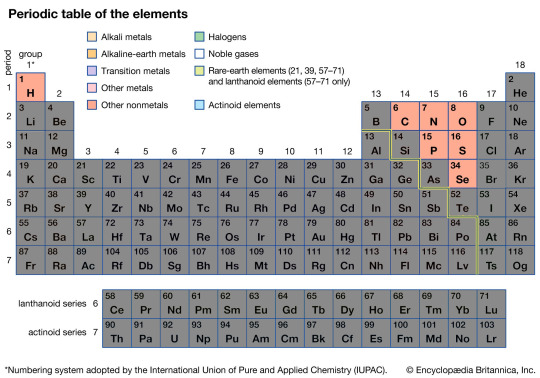
The Non Metals
The Non Metals are a small but extremely unique and important group. All of these elements as the name would suggest sharing the properties of being Non Metals, meaning they are all for the most part poor thermal and electrical conduct, have poor ductility, and form Anions (negatively charged ions).
If you are biologist of any kind, you may also notice this group contains many elements crucial for organic life; the three most important of which without doubt being Carbon, Oxygen, and Hydrogen.
Along with Nitrogen and a few other elements, these elements firm the basis of all life on Earth. From the air you breathe being a Nitrogen-Oxygen mix, to your cells being based on Carbon, to the very DNA that created you. All of it based on Carbon, Oxygen, Nitrogen, and Hydrogen.
And while Oxygen may have taken the honor of the name of Oxidation, it has nothing on the next group,
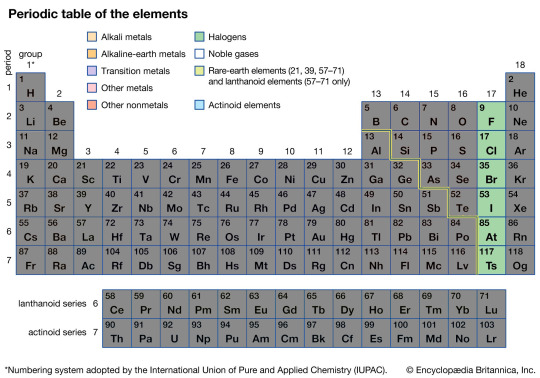
The Halogens
The Halogens, due to missing just one election to be totally stable, are some of the most violently reactive elements on the entire Periodic Table, with Fluorine even known to be able to eat through glass if given enough time.
It might be surprising to hear then that the Halogens also produce some of the most chemically stable compounds known on Earth, such as Polytetrafluoroethylene (PTFE), A.K.A., Teflon. This is because when these elements create compounds they become stable, meaning to break them apart you need an equal amount of energy to do so, and the energy requirement for Halogen compounds is often massive, making them chemically hardy.
Outside of Teflon and eating glass, the less reactive of the Halogens also are used in medicine as a way to sterilize an area. Most commonly and famously used would be Iodine, which not only has a beautiful purple hue, but is also used in surgeries to sterilize equipment and areas before operations, saving countless lives from infections every day.
In contrast to the reactive Halogens, we have next,
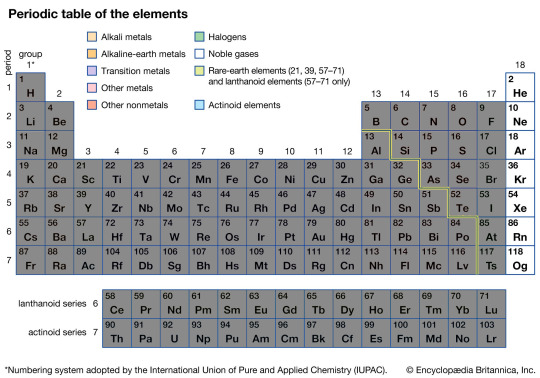
The Nobel Gases
The Nobel Gases like any true Nobels with wealth and status don't like to get involved in the common peasantry's squabbles. In the world of chemicals and elements, this means their full valence electron shells don't stubbornly refuse to chemically react with any other element, and the compounds they do form are often unstable and want to fall apart back into a Nobel Gas and whatever common element it wound up stuck with.
While this lack of reacting does make them rather boring from a reaction perspective, it does make them extremely useful when you do not want things chemically reacting by acting as a buffer between other elements; most easily seen in high end car lights, often filled with Xeon or other Nobel Gases to make sure no matter how hot the light gets it doesn't react chemically and degrade.
Along with protecting lights, they can also be used for lights. Due to their unreactive nature in even high energy environments, it makes them perfect to be used to fill a sealed glass tube that has power shot through it; otherwise known as a Neon Light. However despite the name, not all Neon Lights are filled with Neon, only the orange-red ones are. Other colors such as blues and greens come from the other Nobel Gasses depending on their spectrum emissions.
And on light and degradation, last but not least we have,

The Rare Earth Metals
The Rare Earth Metals can be and often are split into two smaller groups, the upper Lanthanide series and the lower Actinide series.
The upper Lanthanides are all rather chemically similar, meaning they can often be treated somewhat interchangeably in a chemical sense. Their most notable use is without a doubt their ferro magnetic properties, making some of the most powerful magnets on Earth barring electro-magnets. Neodymium magnets are by far the most famous of them, being known to be able to leap across across tables and smash fingers if not handled carefully, while holding up hundreds of pounds of weight.
In contrast, the lower Actinide series is the domain of many of the Radioactive elements and sees the boundary line between the natural and artificial elements. All of them are radioactive to various degrees with decreasing half life lengths.
It is here Thorium and Uranium is found, being the heart of both terrifying bombs and the cleanest sources of energy known to mankind. Beyond Uranium, all the elements are artificial and must be made by humans in breeder reactors.
Despite their association with atom bombs and nuclear reactors, many of these elements also have far more mundane uses. Americium is used in common household Smoke Detectors, saving untold numbers of lives and dollars in property through early warnings of smoke and fire. Other ones are used by NASA and other space agencies in Radioisotope thermoelectric generators or R.T.G.s, used to power spacecraft like Voyager 2 and the Mars Curiosity Rover thousands of miles away from Earth where conventional solar panels would be too heavy, unwieldy, and inefficient so far away from the Sun.
145 notes
·
View notes
Text
@most-definitively-a-human I do, thank you!
Mimicking Plant Movement

Many plants control the curvature of their leaves by selectively pumping water into cells that line the outer surface. This swelling triggers bending. Engineers created their own version of this structure. (Image credit: T. Gao et al.; via GoSM)
Read the full article
197 notes
·
View notes
Note
Your zest for life and learning is lovely. I hope you have many wonderful days filled with inspiration and uninterrupted, joyous concentration.
Aaaaawww, thank you. Same for you :)
5 notes
·
View notes
Text
Hello.
I'm making this post to address some recent hate asks I've received, of the concerning variety.
I've gotten several of them, presumably from the same person. First off, if you're going to try to insult me, at least be creative with it. Second, It's *you're* not your. Please make use of proper grammar in your hate.
If you would like to have a reasonable, responsible debate like mature people, feel free to message me. If you're going to hurl basic unoriginal insults like a middle schooler, you may fuck directly off and stop wasting my time.
#real creative with the “kill yourself”#maybe try something I haven't heard before#I'm willing to take actual criticism or arguments any time#however i am absolutely not going to take such mediocre insults#leave me alone
24 notes
·
View notes
Note
Whats the difference between lichen, moss, mould and mushrooms if they're all fungus? Aren't they all the same sorta thing?
so, interestingly, all of these groups are very different !! instead of naming the differences, let me quickly explain what exactly these organisms are.
lichen :
lichens are symbiotic organisms, meaning they are in themselves the product of a relationship between different organisms. to simplify it, lichens are big part fungus, & smaller part algae (protista) or cyanobacteria (monera). these different forms of life together create lichen, which grows on trees, rocks, leaves, mosses & sometimes other lichens !!
to read more about lichens, check out @/lichenaday's blog :-)
moss :
mosses are actually not fungi at all !! they are small, flowerless plants. they grow on trees & in soil. :-)
mould :
mould is a type of structure that fungi can form - it is entirely fungal. it reproduces through airborne spores :-) there are many different types of mould ; some are toxic, some are used medicinally, & some are saprotrophs.
(note : slime moulds & water moulds are unrelated to fungal moulds !!)
mushrooms :
so, lots of people think mushrooms are a species of fungus, but they are not. "mushroom" refers to the fruiting body of a fungus ; what a mushroom is to a fungus is comparable to what a flower is to a tree - the part that reproduces !! not all fungi produce mushrooms (e.g. moulds, which do not have fruiting bodies as the entire organism is able to release spores). there are currently only 14 000 discovered fungi that produce mushrooms !! more fungi that don't produce mushrooms include mildew, yeast & lichen.
so, yes !! they're all quite different in structure, cells & function in the ecosystem.
510 notes
·
View notes


